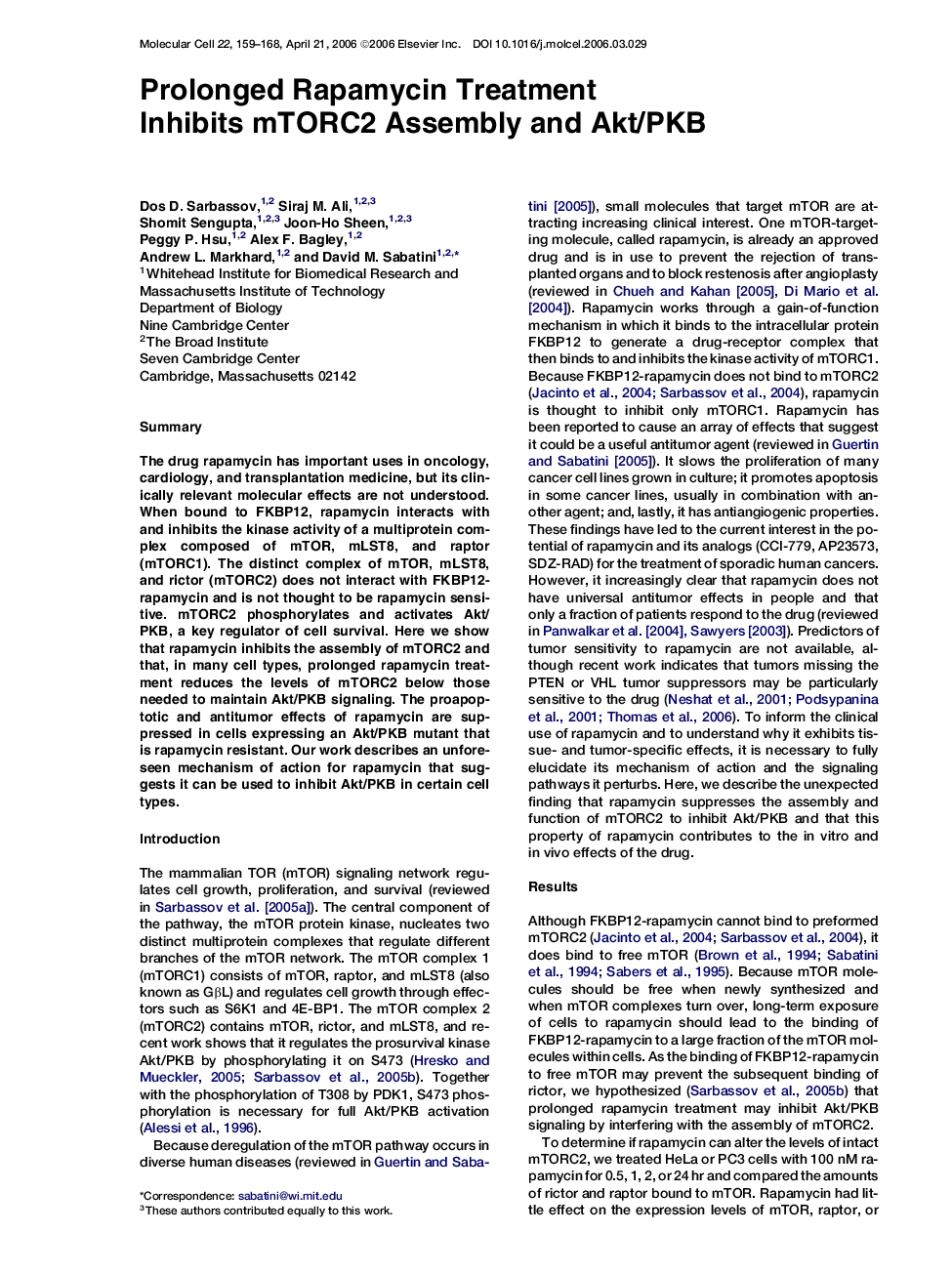| Article ID | Journal | Published Year | Pages | File Type |
|---|---|---|---|---|
| 1998080 | Molecular Cell | 2006 | 10 Pages |
SummaryThe drug rapamycin has important uses in oncology, cardiology, and transplantation medicine, but its clinically relevant molecular effects are not understood. When bound to FKBP12, rapamycin interacts with and inhibits the kinase activity of a multiprotein complex composed of mTOR, mLST8, and raptor (mTORC1). The distinct complex of mTOR, mLST8, and rictor (mTORC2) does not interact with FKBP12-rapamycin and is not thought to be rapamycin sensitive. mTORC2 phosphorylates and activates Akt/PKB, a key regulator of cell survival. Here we show that rapamycin inhibits the assembly of mTORC2 and that, in many cell types, prolonged rapamycin treatment reduces the levels of mTORC2 below those needed to maintain Akt/PKB signaling. The proapoptotic and antitumor effects of rapamycin are suppressed in cells expressing an Akt/PKB mutant that is rapamycin resistant. Our work describes an unforeseen mechanism of action for rapamycin that suggests it can be used to inhibit Akt/PKB in certain cell types.
